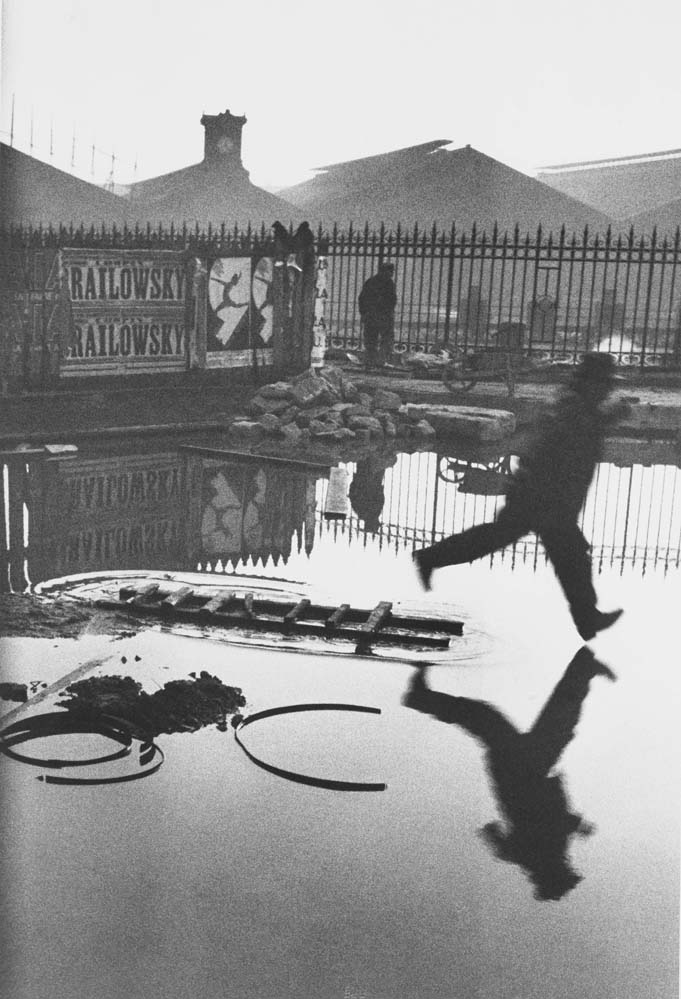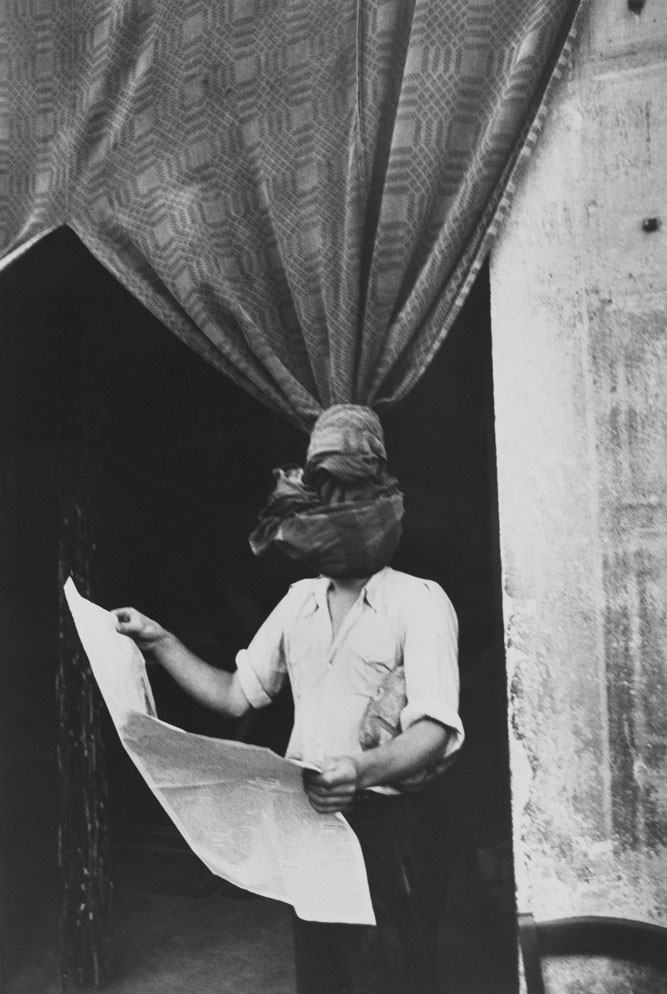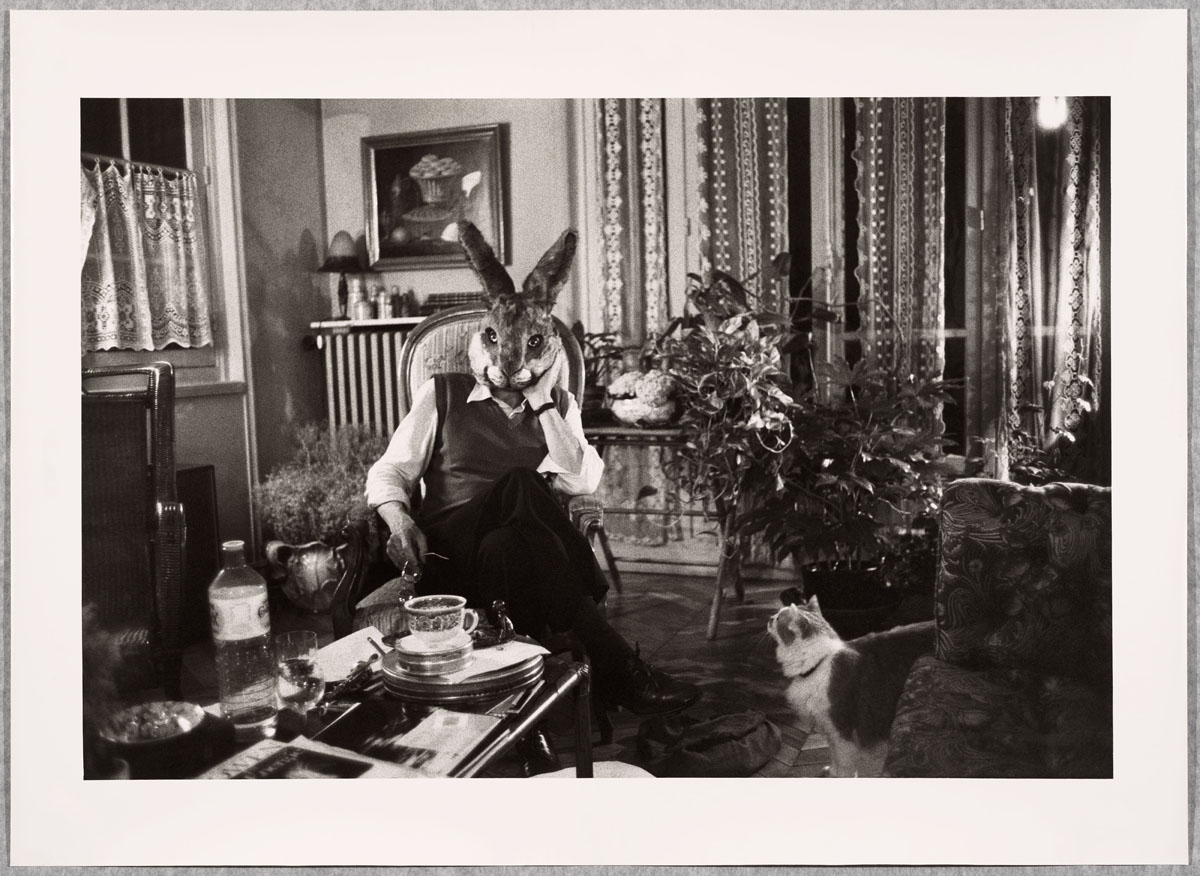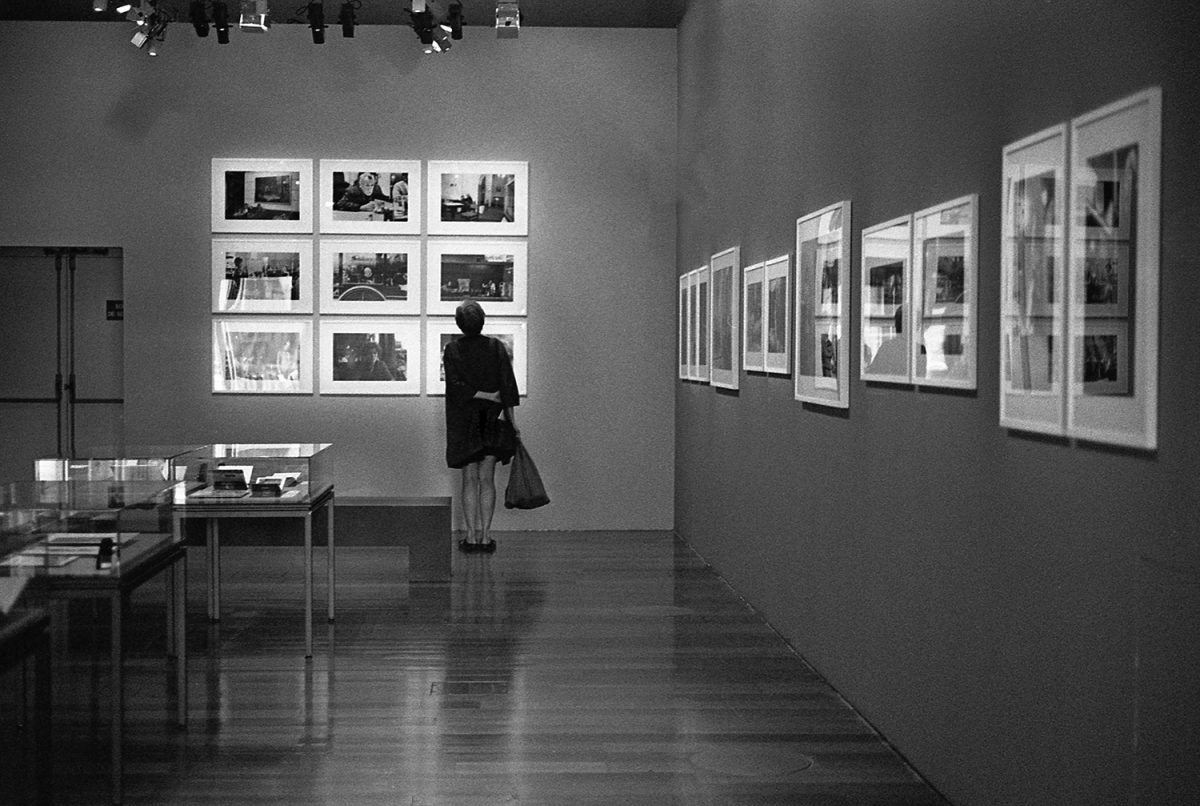Four exhibitions this summer presenting three famous street photographers, Henri Cartier-Bresson, Eugène Atget and Paul Ickovic, have been organized in three Parisian venues: The Musée Carnavalet, the Fondation Henri Cartier-Bresson and the BnF.
First in a groundbreaking double exhibition, the Fondation Henri Cartier-Bresson and the Musee Carnavalet have brought together their collections to showcase the essence of Paris as seen by two great photographers, Eugène Atget and Henri Cartier-Bresson.

Left: Rue des Chantres, IVe, 1923, Right: Fortifications, porte de Sèvres, XVe, 1923. Both images © Paris Musées / musée Carnavalet – Histoire de Paris
Street photographer EUGÈNE ATGET: VOIR PARIS
Perhaps Eugène Atget’s (1857-1921) early theatrical career aided him when he switched to photography; self-taught, he began immortalizing the “petits métiers ambulants” (pushcart merchants) of Paris in 1897 when he was 40 years old. Due to Haussmannian development and the construction of the Metro, the “old Paris” he loved was disappearing; he wished to document it before it was gone. Arriving at dawn with an enormous view camera strapped to his back, Atget set up to photograph the tradespeople and artisans on the streets of the city. Knife sharpeners, basket weavers, rag sellers, and florists posed for him with their ware-laden carts. A candid curiosity and delight is captured on many of his his subjects’ open faces. After a few years, his interest veered toward the old Parisian architecture—buildings, courtyards, ateliers and the streets themselves—and he abandoned the denizens for their lairs. By 1912 he began to photograph the emerging kiosques and boutique windows as the modes of commerce modernized. Atget then became more attentive to the play of light and window reflection, and his artistry evolved; a modern vision of repetitive form and geometric abstraction becomes apparent in some of his later works. He exclusively used 18x24cm (7x9in) glass plates to record his images, resulting in a soft sepia cast. He spoke little about his work, which he considered documentary, but his poetic vision intrigued his contemporaries. Berenice Abbott, an (American) assistant to Man Ray, who had a studio a few doors down from Atget’s, was fascinated by poetic lyricism of his work and wished to promote it. She had photographed him just before his death; afterwards, she purchased half of his archives (some 9000 images scrupulously preserved in his basement during the war) and it is thanks to her that his work is known today.

Henri Cartier-Bresson. Derrière la Gare Saint-Lazare, Place de l’Europe, Paris, France, 1932. © Fondation Henri Cartier-Bresson / Magnum Photos
Street photographer HENRI CARTIER-BRESSON: REVOIR PARIS and LE GRAND JEU
As Atget ended his career, Henri Cartier-Bresson was just beginning his. Born in 1908, Cartier-Bresson studied painting, but frustrated by the rigid yet varying rules of the time, switched to photography once he discovered the new 35mm film, and the Leica camera, in 1931. During his entire career he rigorously applied the specific rules of composition to his photographs that he’d learned from painting. This and his concept of the “decisive moment”—a split second that reveals the larger truth of a situation—shaped modern street photography. Concurrent with the Atget exhibition at the Fondation Henri Cartier- Bresson, the Musée Carnavalet and the Bibliothèque nationale de France are each holding exhibits of selected Henri Cartier-Bresson photographs. The BnF exhibition,“Le Grand Jeu”, is a selection by each of five guest curators from among the 385 “Master Set” photographs that Cartier-Bresson chose as the most significant before his death in 2004. Each of the five compilations is displayed in a separate room, the ambiance and frames chosen by each curator without the knowledge of the others’. Each wrote a short piece about his influence, his work, and/or a memory of the man. Collector Francois Pinault’s selection is hung in the first room: brightly lit white walls, frames and mats; a happy retrospective of many of the most striking of Cartier-Bresson’s works. Pinault, in fact, owns the collection “Le Grand Jeu”, acquired several years ago to help finance the Fondation HCB’s move to their new headquarters in Paris’ Marais district.
The second room was curated by the photographer Annie Leibowitz. Pale grey walls and black frames lend a journalistic feel, and many documentary and political photos were chosen. She wrote about having photographed Cartier-Bresson: his fury first at being photographed on the sly, then his grudging acquiescence as she reframed a few shots. Out of respect for his intense dislike of being photographed, she never published the portraits.
Next was Javier Cercas, the Spanish historical novelist, who writes mainly about the Spanish Civil war and Francoism. Pearl grey walls, black frames with white mats, and quotes by writers created the most poetic feel of the exhibition. Included were some photos relating to the Spanish civil war, and others were among the most lively and lyrical, including some of his Irish nuns and a portrait of Ezra Pound. Cercas also included 3 short films by Cartier-Bresson.
Wim Wenders was the fourth curator.To the right of the entrance to his space hangs the wooden Leica camera sculpted by Cartier-Bresson’s friend Saul Steinberg. Small charcoal grey alcoves, unwinding almost like a roll of film provide a cinematographic ambiance. Each nook contains thematically grouped prints, individually lit like cinema screens, including portraits and crowd shots. At the end a small rectangular space showcases a 10 minute film produced and narrated by a soft-voiced, moist-eyed Wenders, focusing on the details that most captivate him of Cartier-Bresson’s work: the eyes, gestures and regards of such very human subjects.
Finally, soft warm pink walls and pale wooden frames enclose the photographs selected by Sylvie Aubenas, Director of Prints and Photography at the BnF. Her choices are representative of the entirety of Cartier-Bresson’s works, and include many of my favorite streets and some grand classics. An intimate ambiance resonates here: I left feeling as though I’d somehow spent real time with the great master. A lovely and unexpected way to end this inspiring and very personal exhibition and tribute.
Street photographer PAUL ICKOVIC “En Transit”
Also at the BnF is the first French retrospective of Paul Ickovic, a Czech/American street photographer who was a behind-the-scenes publisher, teacher, journalist and filmmaker until his own street photography became noticed in the early 1970’s. Influenced by Brassai, Louis Faurer, and Cartier-Bresson among others, Ickovic is perhaps a bridge from these classic street photographers to the modern and contemporary. The subjects that Ickovic photographs head-on are as delighted to visually connect with him as were Atget’s artisans, yet in the candid anonymous shots Ickovic grabs the “decisive moment” as precisely as Cartier-Bresson. He does so without judgement or the comic elbow-dig of some contemporary street photographers, and without the technical “advances” of modern photography. His prints are imbued with that indefinable, imperfect haze that only film and a honed sense of moment can offer. Both Cartier-Bresson and Ickovic studied art before turning to photography, and both were Leica rangefinder devotees.
Street photography has been my passion since I loaded my first roll of film in my first camera in 1972. I stopped using a camera temporarily in the late 80’s, but never stopped looking and clicking a virtual shutter. When I began shooting in earnest again nearly 30 years later so much had changed—omnipresent cellphones documenting everything, digitally produced miracles—and film had become a vintage cult. The timbre of the streets had changed, people aware and reluctant to be captured on film. As I admire the work of these three great photographers from a 2021 viewpoint, I wonder what the next generation or two will see in early 21st century street photography: will the omnipresent cell phones, masks, and tattoos look as quaint and charming as the accoutrements of the turn of the century, the 30’s, the 50’s, the 70s?
This article is by Judith Bluysen, a relapsed street photographer now shooting in Paris. Check out her website www.judithbluysen.com, or on Instagram @luluparee
EUGÈNE ATGET: VOIR PARIS Until 19 September Ticket reservation
At the Fondation Henri Cartier-Bresson, 79 RUE DES ARCHIVES 75003 PARIS
HENRI CARTIER-BRESSON: REVOIR PARIS Until 31 October Ticket Reservation
Musée Carnavalet – Histoire de Paris, 23 rue de Sévigné 75003 Paris
BIBLIOTHÈQUE NATIONALE DE FRANCE François Mitterrand, Galerie 2, Until 22 August Ticket Reservation






